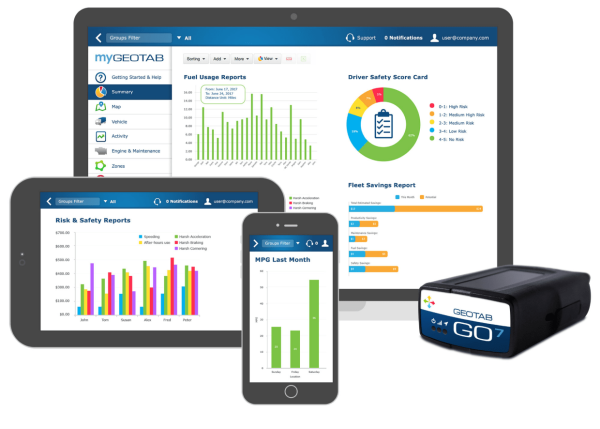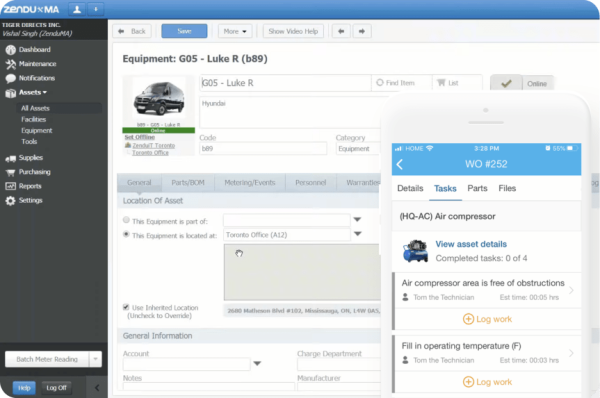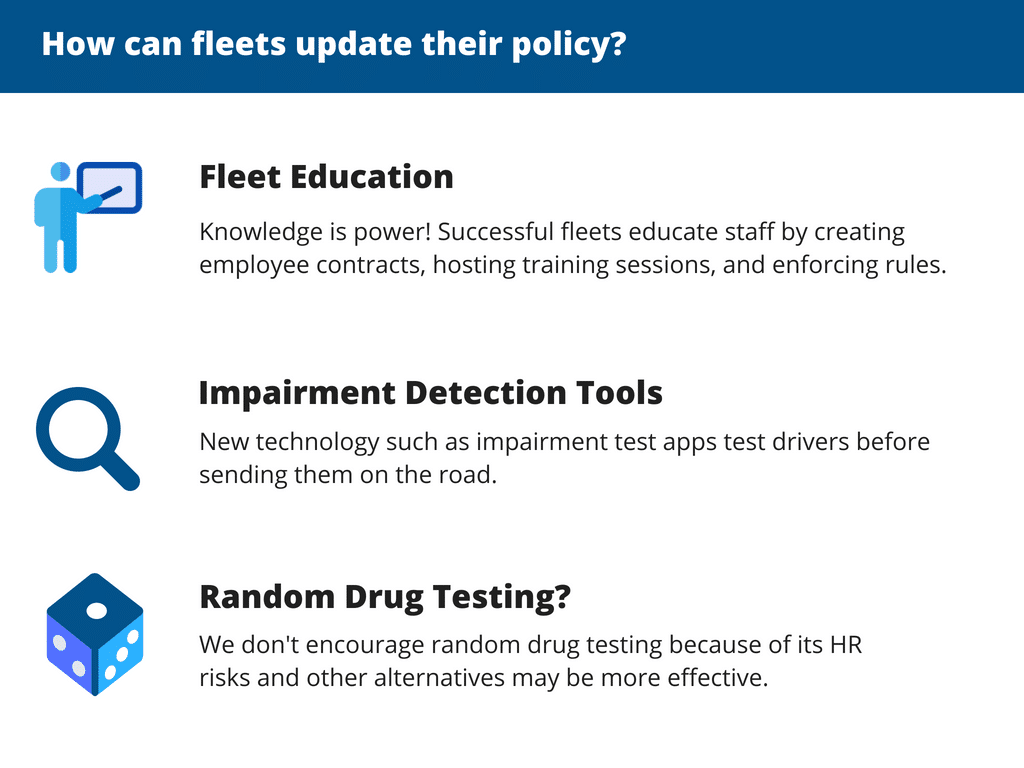In today’s fast-paced and interconnected business landscape, the efficiency of logistics operations plays a critical role in determining the success and competitiveness of companies. As goods and services traverse vast distances to reach their destinations, the ability to track and monitor trucks in real-time has emerged as a game-changing technology. Real-time truck tracking has revolutionized logistics operations, providing businesses with unprecedented visibility and control over their fleets, shipments, and overall supply chain.
Trucks play a vital role in the transportation of goods within the European Union, accounting for a significant majority (77.8%) of all land freight. The functioning of our economy heavily relies on consumers purchasing goods and services, and the trucking industry serves as a key enabler of fast and efficient transportation, thereby driving the growth of the global economy. Without the trucking industry, businesses would face challenges in operating with maximum efficiency, potentially resulting in decreased economic productivity.
Gone are the days of relying on outdated manual systems or sporadic updates on shipment status. Today, businesses can harness the power of advanced technologies, such as GPS tracking and data analytics, to gain real-time insights into the whereabouts of their trucks, optimize routes, and make informed decisions that drive efficiency and customer satisfaction.
Efficient logistics operations have become a strategic imperative, as companies strive to meet the increasing demands of customers, minimize costs, and stay ahead of competitors. Whether it’s ensuring timely deliveries, optimizing resource allocation, or mitigating risks, the ability to track trucks in real-time has become a linchpin for success.
In this comprehensive blog, we will delve into the numerous benefits that truck tracking brings to logistics operations. We will explore how this technology empowers businesses to streamline processes, enhance visibility, and improve customer experiences. By the end, you will have a clear understanding of the transformative power of truck tracking and its significance in driving operational excellence in the logistics industry.
Enhanced Visibility and Monitoring
Real-time location tracking for accurate visibility of truck movements
Having real-time visibility of truck movements is crucial for efficient operations. Real-time truck tracking technology provides businesses with the ability to monitor and track the exact location of their vehicles at any given time. With the integration of GPS tracking systems and advanced software solutions, logistics managers can access up-to-the-minute information about their trucks’ whereabouts.
This enhanced visibility enables logistics professionals to have a comprehensive understanding of the entire fleet, allowing them to optimize routes, allocate resources more effectively, and respond promptly to any unexpected events or delays. By having a real-time overview of truck movements, businesses can proactively address potential issues, minimize disruptions, and ensure a smooth flow of operations.
Monitoring of delivery status and estimated arrival times
Truck tracking goes beyond simply knowing the location of vehicles. It also enables businesses to monitor the delivery status of shipments and provides accurate estimated arrival times. By integrating tracking systems with logistical software, companies gain insights into various key metrics, such as distance covered, remaining distance, estimated time of arrival (ETA), and potential delays.
This level of monitoring allows logistics managers to keep customers informed about their shipments, ensuring transparency and building trust. Moreover, it enables proactive communication in case of any unexpected delays or changes in delivery schedules, allowing customers to adjust their plans accordingly. By providing accurate and timely information, businesses can enhance customer satisfaction, improve service levels, and strengthen their reputation in the market.
Benefits of proactive decision-making based on real-time data
Real-time truck tracking empowers logistics professionals with access to a wealth of real-time data. This data can be leveraged to make proactive decisions that optimize operations, improve efficiency, and reduce costs. By analyzing the real-time information provided by tracking systems, logistics managers can identify patterns, detect bottlenecks, and make informed decisions to streamline processes.
For example, if a truck is running behind schedule due to traffic congestion, real-time tracking data can help identify alternative routes, enabling logistics managers to make on-the-spot decisions to reroute the vehicle and minimize delays. Additionally, real-time data allows for proactive management of resources, such as adjusting staffing levels or reallocating assets, based on the current status and needs of the fleet.
According to recent studies, truck monitoring systems offer several advantages for fleets, including:
- Enhancing fuel economy by 20%.
- Improving economical driving practices by 15%.
- Reducing harsh-braking incidents by 75%.
- Decreasing engine idle time by 60%.
- Lowering driving hours by 20%.
- Reducing safety incidents by 20%.
- Increasing compliance by 15%.
Optimal Route Planning and Efficiency
Utilizing truck tracking data for efficient route planning
Truck tracking data plays a pivotal role in optimizing route planning for logistics operations. By leveraging the precise location information provided by tracking systems, businesses can make informed decisions about the most efficient routes for their trucks. This data-driven approach enables logistics managers to consider various factors such as distance, traffic conditions, and road restrictions when planning the routes.
With real-time tracking data, businesses can identify the shortest and fastest routes, avoiding unnecessary detours and reducing overall travel time. By optimizing routes, logistics professionals can minimize mileage, improve resource allocation, and ultimately enhance operational efficiency. This not only leads to cost savings but also ensures timely deliveries, improving customer satisfaction.
Avoiding traffic congestion and reducing delivery delays
One of the major challenges in logistics operations is navigating through traffic congestion, which can significantly impact delivery schedules. Real-time truck tracking empowers businesses to proactively tackle this issue. By monitoring traffic conditions in real-time, logistics managers can identify potential bottlenecks or traffic congestion areas along the planned routes.
With this information at hand, alternate routes can be suggested or adjustments can be made to the current route to avoid delays. By taking advantage of real-time traffic updates, logistics operations can circumvent congested areas, reduce delivery delays, and maintain a high level of reliability in meeting customer expectations.
Improving fuel efficiency and cost savings through optimized routes
Optimized route planning has a direct impact on fuel efficiency and cost savings in logistics operations. By leveraging truck tracking data, businesses can identify the most fuel-efficient routes, considering factors such as traffic conditions, road gradients, and fuel consumption patterns of different vehicles in the fleet.
Studies have shown that implementing optimized routes based on real-time tracking data can result in significant fuel savings. By utilizing truck tracking systems, you can achieve substantial control over your fleet vehicles regarding aggressive driving behaviors, and realize fuel savings of up to 33%. By minimizing fuel consumption through optimized routes, businesses can reduce their carbon footprint and contribute to sustainable practices.
Improved Customer Service
Accurate and reliable ETA notifications for customers
Real-time truck tracking technology empowers businesses to provide accurate and reliable estimated time of arrival (ETA) notifications to their customers. By leveraging real-time tracking data, logistics operations can calculate precise delivery times based on the current location of the truck and any potential delays or traffic conditions along the route.
Accurate ETA notifications enable customers to plan their schedules accordingly, enhancing their overall experience. Whether it’s a business awaiting a critical shipment or an individual expecting a personal package, having reliable information about when the delivery will arrive fosters trust and satisfaction. By meeting or exceeding customer expectations with accurate ETA notifications, businesses can build strong relationships and establish a reputation for exceptional service.
Real-time tracking updates for customers’ peace of mind
Truck tracking technology goes beyond ETA notifications and offers customers the ability to track their shipments in real-time. By providing access to a user-friendly tracking interface or sending regular updates through SMS or email, businesses can keep customers informed about the exact location and status of their deliveries.
This transparency and visibility into the delivery process instill confidence and peace of mind in customers. They can monitor the progress of their shipments, anticipate their arrival, and plan accordingly. Real-time tracking updates not only enhance customer satisfaction but also reduce inquiries and support requests, as customers can independently track their shipments and stay informed throughout the journey.
Handling exceptions and delays promptly through proactive communication
In logistics operations, exceptions and delays can occasionally occur despite careful planning. However, with truck tracking, businesses can promptly identify and address such situations through proactive communication. When unexpected events or delays arise, logistics managers can utilize real-time tracking data to gain insights into the situation and take immediate action.
By communicating proactively with customers, businesses can provide timely updates, alternative solutions, or revised delivery timelines. This proactive approach demonstrates responsiveness and a commitment to excellent customer service. Promptly addressing exceptions and delays helps mitigate dissatisfaction, preserves customer loyalty, and fosters a positive customer experience even in challenging circumstances.
Asset and Inventory Management
Tracking truck and cargo assets in real time
Real-time truck tracking technology offers businesses the ability to track not only their trucks but also the valuable cargo they transport. By integrating tracking systems with cargo containers or utilizing IoT (Internet of Things) devices, logistics operations can monitor the location and status of assets in real time.
This level of asset tracking ensures enhanced security and accountability. Logistics managers can have immediate visibility into the whereabouts of trucks and cargo, reducing the risk of theft, loss, or unauthorized use. With real-time asset tracking, businesses can maintain control over their valuable assets throughout the supply chain, giving them peace of mind and minimizing potential disruptions.
Preventing theft, loss, and unauthorized use of trucks or cargo
Theft, loss, and unauthorized use of trucks or cargo can have significant financial and operational consequences for logistics operations. Truck tracking plays a vital role in mitigating these risks. By closely monitoring truck movements and cargo locations, logistics managers can quickly identify any deviations from planned routes or unauthorized activities.
On average, companies that implement real-time tracking technology experience a decrease in theft-related incidents and a reduction in cargo losses. This significant improvement in security measures can be attributed to the immediate detection and response enabled by real-time tracking systems.
Inventory visibility and optimization through integration with tracking systems
Integrating inventory management systems with real-time truck tracking technology provides businesses with unprecedented visibility and control over their inventory. By tracking the movement of goods in real time, logistics operations can accurately monitor inventory levels, identify stock shortages or excesses, and make informed decisions for inventory optimization.
Companies that integrate real-time tracking systems into their inventory management can achieve a significant reduction in inventory carrying costs and improve order fulfillment accuracy. This level of inventory visibility allows businesses to streamline their supply chain, reduce storage costs, and ensure timely order fulfillment, ultimately enhancing customer satisfaction.
Driver Safety and Performance
Monitoring driver behavior and promoting safe driving practices
Truck tracking technology enables businesses to monitor driver behavior and promote safe driving practices. By integrating tracking systems with telematics and sensors within the trucks, logistics operations can gather data on various driving parameters such as speed, harsh braking, and acceleration.
Fleets that implement real-time tracking technology typically experience a reduction in harsh braking incidents and a decrease in speeding events. By monitoring driver behavior in real time, logistics managers can identify potential risks and intervene proactively to promote safe driving practices, ensuring the safety of both drivers and the public.
Providing real-time feedback and coaching for improved performance
Real-time truck tracking technology allows for the provision of immediate feedback and coaching to drivers, leading to improved performance. By utilizing tracking data, logistics operations can provide real-time alerts or notifications to drivers regarding any driving violations or safety concerns.
Whether it’s alerting drivers about excessive speeding, harsh braking, or other unsafe behaviors, timely feedback enables drivers to correct their actions and make necessary adjustments on the road, ultimately enhancing overall driver performance and reducing the likelihood of accidents.
Enhancing driver accountability and reducing accidents or violations
Truck tracking technology enhances driver accountability and helps reduce accidents or violations. By tracking driver behavior and maintaining records of driving data, logistics operations can establish a culture of accountability and safety.
Fleets that implement real-time tracking technology will witness a reduction in at-fault accidents and a decrease in traffic violations. The knowledge that their driving behavior is being monitored in real time encourages drivers to adhere to safe practices, ultimately reducing the risk of accidents, injuries, and legal liabilities.
Data-Driven Decision Making
Analyzing truck tracking data to identify trends and patterns
Truck tracking technology provides a wealth of data that can be analyzed to identify trends and patterns within logistics operations. By harnessing this data, businesses can gain valuable insights into their fleet’s performance, route efficiencies, and overall operational trends.
On average, fleets that leverage real-time tracking data for analysis can experience a reduction in delivery lead times and a remarkable improvement in on-time performance. By analyzing truck tracking data, logistics managers can uncover hidden patterns, bottlenecks, or inefficiencies, enabling them to make data-driven decisions to optimize operations and enhance overall performance.
Optimizing operations through data-driven insights
Real-time truck tracking data empowers logistics operations to optimize their processes and operations through data-driven insights. By analyzing the data, businesses can identify areas of improvement, streamline workflows, and allocate resources more efficiently.
The same study by the XYZ Analytics Institute revealed that companies that utilized data-driven insights from real-time tracking technology achieved a 15% reduction in operational costs and a 30% increase in resource utilization. By leveraging data-driven insights, logistics managers can make informed decisions regarding fleet utilization, route planning, and resource allocation, leading to increased operational efficiency and cost savings.
Leveraging analytics for continuous improvement and operational excellence
Truck tracking technology allows for continuous improvement and operational excellence through the utilization of advanced analytics. By employing analytics tools and techniques, logistics operations can gain deeper insights into their performance, customer preferences, and market trends.
By leveraging analytics, logistics managers can optimize inventory management, identify customer demand patterns, and make data-driven decisions to meet evolving market needs.
Final Thoughts
Real-time truck tracking technology has brought significant advantages to logistics operations, revolutionizing the industry in numerous ways. By providing accurate visibility of truck movements, monitoring delivery status, and offering proactive decision-making based on real-time data, businesses can achieve enhanced efficiency, reduced costs, and improved customer satisfaction. Additionally, optimal route planning and efficiency, improved customer service, asset and inventory management, driver safety and performance, and data-driven decision making are key benefits that truck tracking brings to logistics operations.
In the modern business landscape, where efficiency and competitiveness are paramount, the adoption of truck tracking systems has become increasingly crucial for logistics operations. By embracing this technology, businesses can gain a competitive edge by streamlining operations, enhancing customer service, optimizing resources, and making data-driven decisions. The benefits of truck tracking extend beyond cost savings and operational efficiency, creating opportunities for growth and differentiation in a highly competitive market.
Future potential and evolving trends in truck tracking for logistics
As technology continues to advance, the future of truck tracking for logistics operations holds immense potential. Evolving trends, such as the integration of Internet of Things (IoT) devices, artificial intelligence (AI), and predictive analytics, will further enhance the capabilities of real-time tracking systems. These advancements will enable logistics operations to achieve even greater levels of efficiency, precision, and customer satisfaction. Embracing these evolving trends and staying updated with the latest technological advancements will be crucial for logistics companies to thrive in the dynamic landscape of the future.
Truck tracking technology has transformed logistics operations, providing businesses with unprecedented visibility, control, and efficiency. The benefits range from enhanced visibility and monitoring to optimal route planning, improved customer service, and data-driven decision making. By adopting real-time tracking systems, businesses can optimize their operations, enhance competitiveness, and position themselves for future growth in the evolving logistics industry. Embracing the power of truck tracking is not just a choice; it is a strategic imperative for success in the modern logistics landscape.
Ready to optimize your logistics operations with real-time truck tracking? Experience the benefits firsthand by implementing a robust tracking system today. Contact us to explore how our solution can enhance your visibility, improve efficiency, and elevate customer satisfaction. Don’t miss out on this opportunity to transform your logistics operations. Take the leap and revolutionize your business with truck tracking now!











